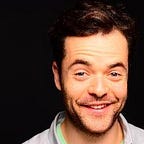My Ideal Community Manifesto
I have been building communities for years and have found tremendous joy and value in them. And as part of that journey I realized that there are best practices and frameworks that help make communities better. However, I also realized that some of my community building guidelines weren’t necessarily based in fact, but more in personal beliefs about what an ideal community should and can be. Below I have written down my core beliefs, both as a North Star for our work at Together Institute where we help other organizations build meaningful communities and as an opportunity to learn about other community builder’s core beliefs out there. What does your ideal community look like?
—
My Ideal Community Manifesto
When humans come together and build authentic relationships, magic happens. A community exists to allow more magic to happen.
Building a community is not primarily about building an organization, it is about growing a family. It is about working with real human beings, each with their own story, history, feelings, hopes and dreams.
Humans are beautiful because they are warm, kind, quirky, informal, crazy, unique, emotional, resourceful, messy, full of contradictions, wonder and surprise. Ideally the community is as human as the people in it.
Deep down, we all want to belong, we all want to feel loved and we all want to be accepted for who we truly are. That’s what a community is about, not about “networking”.
Trust is the foundation of everything. Without trust there are no relationships, no friendships, no collaborations, no call for help in desperate moments, no honesty, no wedding invitations, no humanness.
There are plenty of moments in life where we show up with our strongest face. It is part of our ability to survive. But great communities allow us to let our guards down and to be our real selves. Vulnerability is not a weakness, but exposes the human side of us and allows us to connect on an authentic and deep level. It is in those moments when we grow the most.
Trusting someone is a big step and we need to feel safe to do so. Trust is earned, not given, and the ideal community provides a safe environment to slowly, step by step, develop that trust.
We have no way of predicting which relationships will blossom and change the world. In fact, chaos is a wonderful thing and serendipity creates many beautiful encounters in a community. The ideal community finds ways to create more serendipitous moments for its members.
Consistency is the heartbeat of every community. It matters less how amazing the community is today. It matters much more that we can expect to experience the same tomorrow and a year from now. This sense of repeatability creates trust and a willingness to invest ourselves in the long-term.
A community is never something given to a member, but ideally always co-created and co-owned. However, big groups of humans have a hard time making decisions and they still need leadership and someone to call the shots. Leading a diverse group of humans, each with with their own opinions and interests, isn’t an easy thing and can feel like herding cats. People running the community deserve gratitude, patience, kindness and forgiveness from the members.
Ideally, communities are built for a lifetime. Because ideally, relationships are built for a lifetime. The individual trust among members accumulates over time and step by step becomes the trust into the overall community, which in turn makes it easier for individuals to trust each other. While trust takes a long time to build, it is destroyed in an instant.
Communities are a unique opportunity for us to treat each other in a special way, maybe even treat each other better than we would otherwise. That’s why the ideal community has agreed upon a shared set of values and it has embedded those values throughout the experience, so that they are very visible, easy to remember and easy to act upon. Values are nothing but words at the beginning and only persistent action makes them real.
Many organizations think that formality is a good thing, a sign of professionalism and success. But humans at their core are informal and they connect more deeply when their gatherings, places, settings and conversations are informal.
More diverse communities are more powerful. That’s why the ideal community doesn’t leave diversity up to chance, but makes it a conscious choice that impacts all of its actions and words. And diversity doesn’t stop with finding people with a broad range of perspectives, but making sure that they truly feel comfortable and at home within the community. Also, don’t forget the introverts.
—
